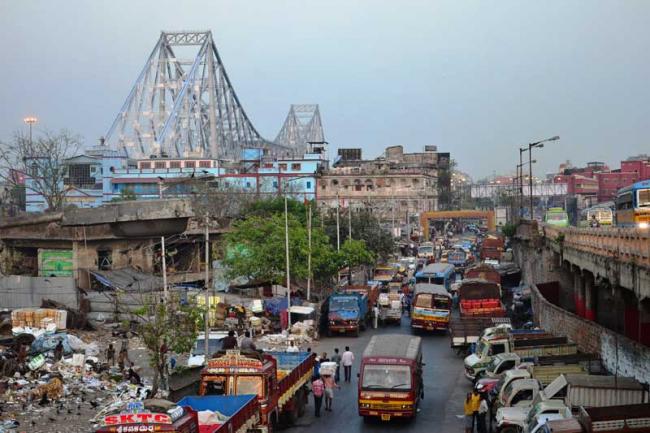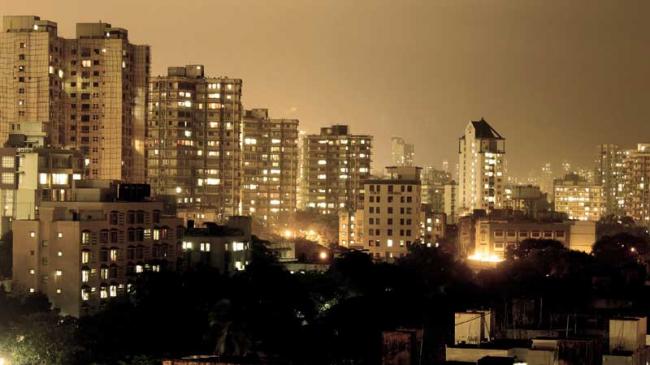
Life in the cities
Rapid urbanisation the world over has put severe pressure on the infrastructure of many cities and towns. India is among the countries with the fastest growth in this sector and, unless plans with a long view are mooted, the situation could only worsen. Ranjita Biswas reports
From Do Bigha Zamin (1953) to the recent City Lights (2014) Hindi mainstream cinema has featured the theme of rural migration to cities in search of a livelihood. Celluloid stories often reflect the reality. Indeed, the story of the poor or displaced arriving in the city seeking a better life is not new or confined to India; it’s a phenomenon the world over. What is new is the escalation in the rate of the migration to the cities in the recent decades and rapid urbanisation thereof. The trend puts a challenge to the infrastructure of the urban habitat at all levels- housing, water availability, transport , etc.
 How to tackle these real-time problems in the coming decades when urbanisation does not look like abetting any time soon? How to design more livable cities and towns? It was at the crux of the UN Habitat III Conference on Housing and Sustainable Urban Development held in Quito, the capital of Ecuador, in 2016. Themes like climate change and its effect on urban areas, safety, renewable energy, sustainable housing, social inclusion policies, transport and mobility for all, women’s right to the city, and ways of financing urban initiatives- a whole range of subjects came up for discussion. In all, 193 member countries participated and a New Urban Agenda was signed as guideline for building the next generation of livable cities.
How to tackle these real-time problems in the coming decades when urbanisation does not look like abetting any time soon? How to design more livable cities and towns? It was at the crux of the UN Habitat III Conference on Housing and Sustainable Urban Development held in Quito, the capital of Ecuador, in 2016. Themes like climate change and its effect on urban areas, safety, renewable energy, sustainable housing, social inclusion policies, transport and mobility for all, women’s right to the city, and ways of financing urban initiatives- a whole range of subjects came up for discussion. In all, 193 member countries participated and a New Urban Agenda was signed as guideline for building the next generation of livable cities.
According to the India Habitat III National Report (2016), India now has 423 million people living in cities and towns which is poised to rise to 606 million in 2030. This trend has also brought a shift in the country’s GDP with the urban sector’s contribution at 60 per cent
India was one of the signatories. Admittedly, the country’s pace of urbanisation was slow, that is, until now, with about 35% of the population living in urban areas but as Derk Segaar, UN Information Center for India and Bhutan, New Delhi, said at a recent meet of experts and media, “Six out of the seven fastest cities growing in the next five years in the world are going to be in India. The capital will lead the pack.” Quoting UN Habitat III statistics, he added, “In the next 15 years India will need 22 more cities like Bangaluru to cope with the rapid urbanisation and consequently massive infrastructures will be required in the next 20 years- more than has been built in the last 2000 years.”
 According to the India Habitat III National Report (2016), India now has 423 million people living in cities and towns which is poised to rise to 606 million in 2030. This trend has also brought a shift in the country’s GDP with the urban sector’s contribution at 60 per cent.
According to the India Habitat III National Report (2016), India now has 423 million people living in cities and towns which is poised to rise to 606 million in 2030. This trend has also brought a shift in the country’s GDP with the urban sector’s contribution at 60 per cent.
Globally too, though only 2 per cent of the land is occupied by the urban sector it contributes 70 per cent to the economy. So building ‘livable’ cities is a constant need and challenge. In India, with rapid urbanisation the existing ones are crumbling under congestion, pollution in metros is jumping up the graph, and for more than 65 million people who live in slums, even the basic necessities of housing, running water and sanitation are lacking.
The mushrooming of slums is blamed by many of the city fathers for the deterioration of cities and towns. However, Ajay Suri of Cities Alliance, a global partnership supporting cities to deliver sustainable development, feels that “Slum is manifestation of inefficient city management,” and reflects a short-term look at this sector. “They must look at an effective housing demand and keep in mind the question of affordability.” He cited the examples of South Africa and Brazil which have built affordable houses for the stake holders.
In India, with rapid urbanisation the existing ones are crumbling under congestion, pollution in metros is jumping up the graph, and for more than 65 million people who live in slums, even the basic necessities of housing, running water and sanitation are lacking.
Renu Khosla, director, CURE (Centre for Urban and Regional Excellence) an NGO based in Delhi which works with urban informal and low-income communities, has an interesting suggestion: “Give the people a choice, which area they want to live in a ‘normal’ way with their community and not necessarily where they are forced to.”
 In India, people have a strong bond with the community which gives them a sense of belonging, especially when they are uprooted from their original home. “They may even choose to live outside the fringe of the city provided good housing and transport to the work place are provided. Today people talk about ‘good urbanisation’ meaning Smart Cities, and ‘bad urbanisation’- with slums and poverty, which is not a long term solution to habitable cities and towns,” Khosla said.
In India, people have a strong bond with the community which gives them a sense of belonging, especially when they are uprooted from their original home. “They may even choose to live outside the fringe of the city provided good housing and transport to the work place are provided. Today people talk about ‘good urbanisation’ meaning Smart Cities, and ‘bad urbanisation’- with slums and poverty, which is not a long term solution to habitable cities and towns,” Khosla said.
In the next 15 years India will need 22 more cities like Bangaluru to cope with the rapid urbanisation and consequently massive infrastructures will be required in the next 20 years- more than has been built in the last 2000 years.
In fact, the just concluded World Urban Forum (WUF) in Kuala Lumpur saw participants from the world over congregating in an open platform to exchange their views on the problems and possible solutions for their urban habitats. The WUF was established in 2001 by the UN to discuss ‘pressing issues facing the world today: rapid urbanisation and its impact on communities, cities, economies, climate change and policies’.
The uniqueness of this Forum, unlike other UN conferences, is that it does not announce any Agenda, and secondly, its inclusiveness inviting stake holders from different sections as well as planners, experts etc. in an open international platform.
Climate change and its impact is, of course, a vital topic. And rightly so. Who would have thought that Paris would be under a blanket of snow in the middle of February, or before that, facing unseasonal flood? Unexpected rain and mud-slides are becoming common in many cities and towns while droughts have scorched many lands driving more people to the cities. To cope with such changes in Japan experts in built-in environment are already looking at how to adjust to climate changes, said Atsushi Koresawa, director, UN-Habitat Regional Office for Asia and the Pacific. Looking at the future, “It is time to show how India and Asia as well, are planning to tackle these challenges” he cautioned.
 The wake-up call was sounded way back in 1976 when the First Habitat was held in 1976 in Vancouver to draw attention to the fact that the world was urbanising rapidly but haphazardly. The next one was in 1996 in Istanbul where a global action plan to provide shelter for all was adopted as the Habitat Agenda. Over the past year, regional meetings on these themes have been taking place in various cities of the world and the inputs fed into the drafting of the New Urban Agenda declared in Quito.
The wake-up call was sounded way back in 1976 when the First Habitat was held in 1976 in Vancouver to draw attention to the fact that the world was urbanising rapidly but haphazardly. The next one was in 1996 in Istanbul where a global action plan to provide shelter for all was adopted as the Habitat Agenda. Over the past year, regional meetings on these themes have been taking place in various cities of the world and the inputs fed into the drafting of the New Urban Agenda declared in Quito.
Ensuring safe, inclusive and resilient cities is part of the UN’s Sustainable Development Goals (No 11) which also envisages, among others, adequate and affordable housing and basic services for all by 2030.
Support Our Journalism
We cannot do without you.. your contribution supports unbiased journalism
IBNS is not driven by any ism- not wokeism, not racism, not skewed secularism, not hyper right-wing or left liberal ideals, nor by any hardline religious beliefs or hyper nationalism. We want to serve you good old objective news, as they are. We do not judge or preach. We let people decide for themselves. We only try to present factual and well-sourced news.







